Yunucms v2.0.7 后台xss¶
一、漏洞简介¶
云优CMS是一款基于TP5.0框架为核心开发的一套免费+开源的城市分站内容管理系统。云优CMS前身为远航CMS。云优CMS于2017年9月上线全新版本,二级域名分站,内容分站独立,七牛云存储,自定义字段,自定义表单,自定义栏目权限,自定义管理权限等众多功能深受用户青睐。
二、漏洞影响¶
Yunucms v2.0.7
三、复现过程¶
环境搭建¶
从官网下载源码并进行过安装
需要注意的是需要填云账号,我去官网注册了一个随便填上了,账号testqwe,密码123456,手机号利用的在线短信注册的
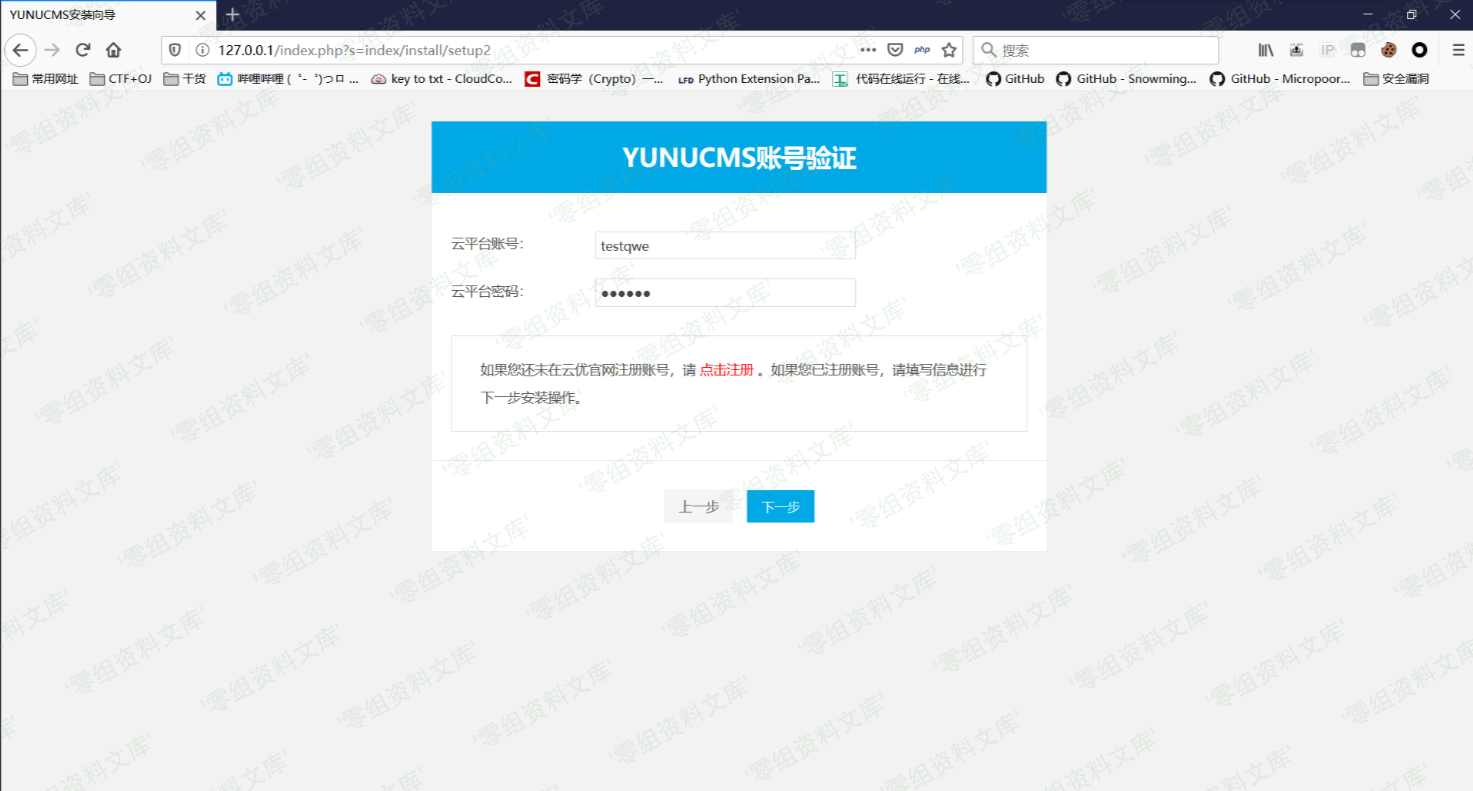
填上MySQL密码即可
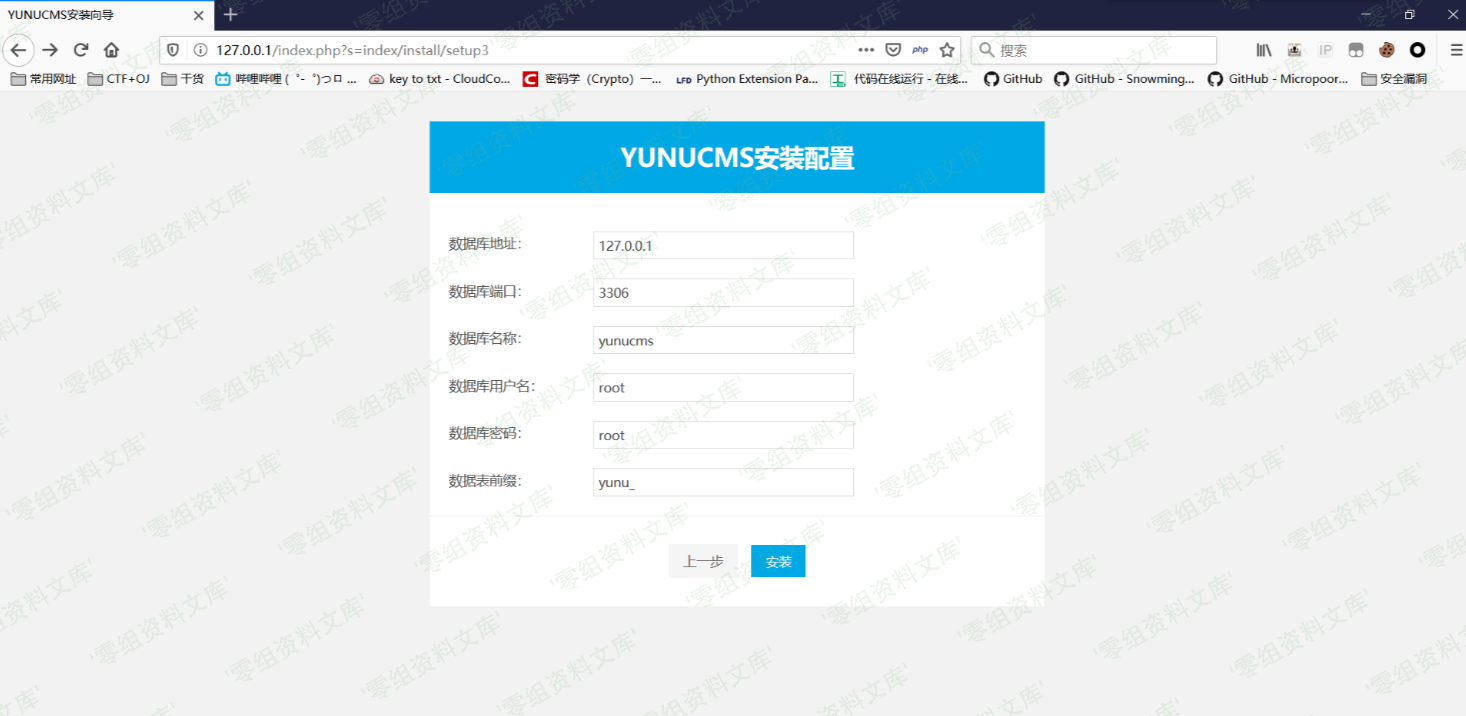
前台界面

漏洞分析¶
http://www.0-sec.org/index.php?s=/admin/tagurl/addtagurl
该cms路由为目录/文件/方法,直接查看方法
public function addTagurl()
{
if(request()->isAjax()){ # 判断是否是ajax请求
$param = input('post.'); # 获取参数
$tagurl = new TagurlModel();
$flag = $tagurl->insertTagurl($param); # 将结果进行保存并返回响应
return json(['code' => $flag['code'], 'data' => $flag['data'], 'msg' => $flag['msg']]);
}
return $this->fetch();
}
跟进insertTagurl方法
public function insertTagurl($param)
{
try{
$result = $this->allowField(true)->save($param); # 保存当前数据对象
if(false === $result){
return ['code' => -1, 'data' => '', 'msg' => $this->getError()];
}else{
return ['code' => 1, 'data' => '', 'msg' => '添加TAG成功'];
}
}catch( PDOException $e){
return ['code' => -2, 'data' => '', 'msg' => $e->getMessage()];
}
}
继续跟进save方法
if (!empty($data)) {
// 数据自动验证
if (!$this->validateData($data)) { # 验证集为空,直接返回true
return false;
}
// 数据对象赋值
foreach ($data as $key => $value) {
$this->setAttr($key, $value, $data); # 将参数赋值给$this->data数组
}
if (!empty($where)) {
$this->isUpdate = true;
}
}
......
$result = $this->getQuery()->insert($this->data);
......
``
validateData方法需要验证集,而本身没有传入
protected function validateData($data, $rule = null, $batch = null)
{
$info = is_null($rule) ? $this->validate : $rule;
if (!empty($info)) {
......
}
return true;
}
且$this->validate参数为空,因此直接返回true
跟进insert方法
.....
// 生成SQL语句
$sql = $this->builder->insert($data, $options, $replace);
$bind = $this->getBind();
if ($options['fetch_sql']) {
// 获取实际执行的SQL语句
return $this->connection->getRealSql($sql, $bind);
}
// 执行操作
$result = $this->execute($sql, $bind);
fetch_sql变量为false,跟进execute方法
......
if ($procedure) { # false
$this->bindParam($bind);
} else {
$this->bindValue($bind);
}
......
最后跟进参数绑定方法
protected function bindValue(array $bind = [])
{
foreach ($bind as $key => $val) {
// 占位符
$param = is_numeric($key) ? $key + 1 : ':' . $key;
if (is_array($val)) {
if (PDO::PARAM_INT == $val[1] && '' === $val[0]) {
$val[0] = 0;
}
$result = $this->PDOStatement->bindValue($param, $val[0], $val[1]);
} else {
$result = $this->PDOStatement->bindValue($param, $val);
}
if (!$result) {
throw new BindParamException(
"Error occurred when binding parameters '{$param}'",
$this->config,
$this->getLastsql(),
$bind
);
}
}
}
可以看到最后是调用PDO对象对参数进行的绑定,除此之外并没有任何过滤,因此XSS代码可插入并执行
漏洞复现¶
后台TAG管理模块
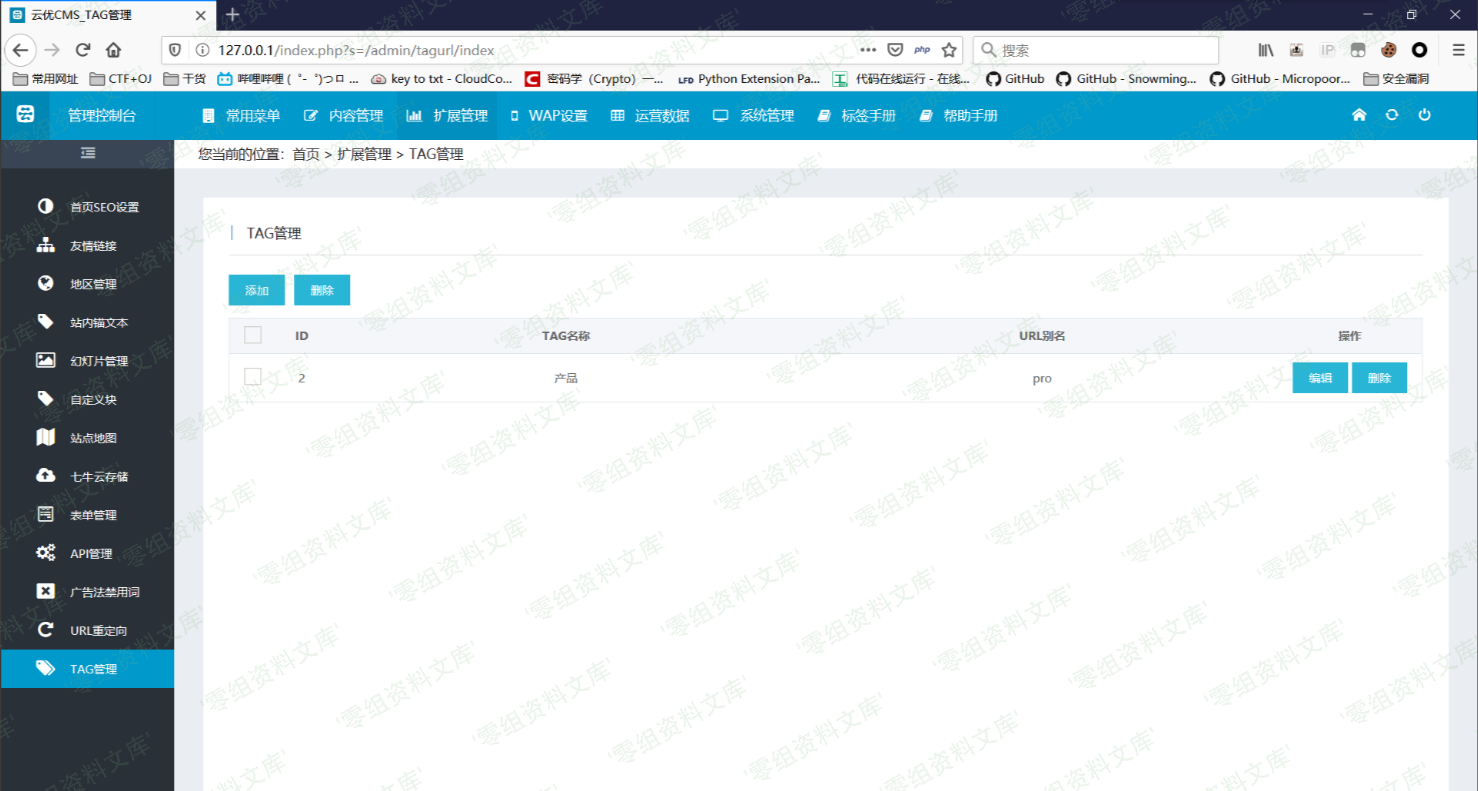
进行添加TAG
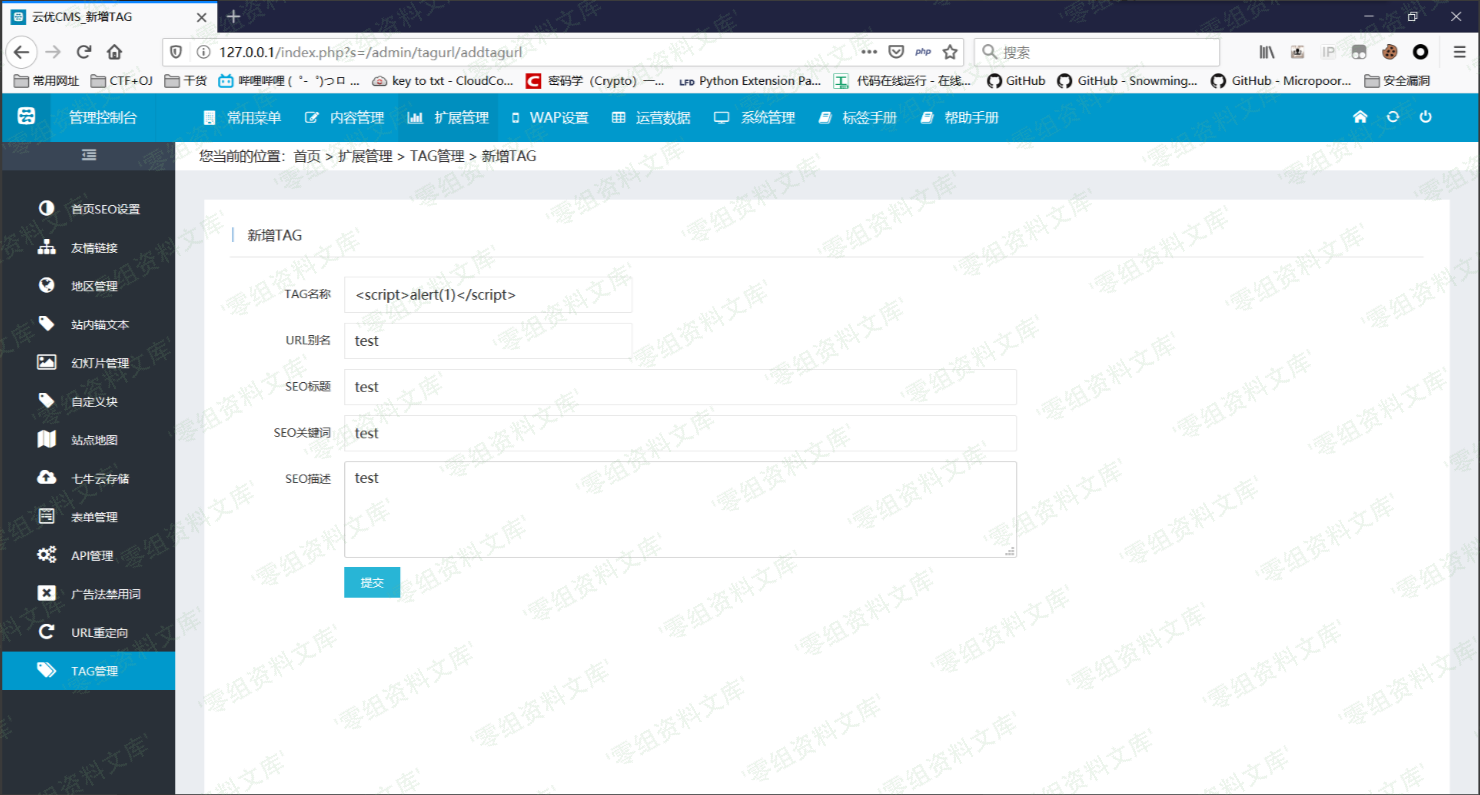
在名称处填入XSS代码并提交
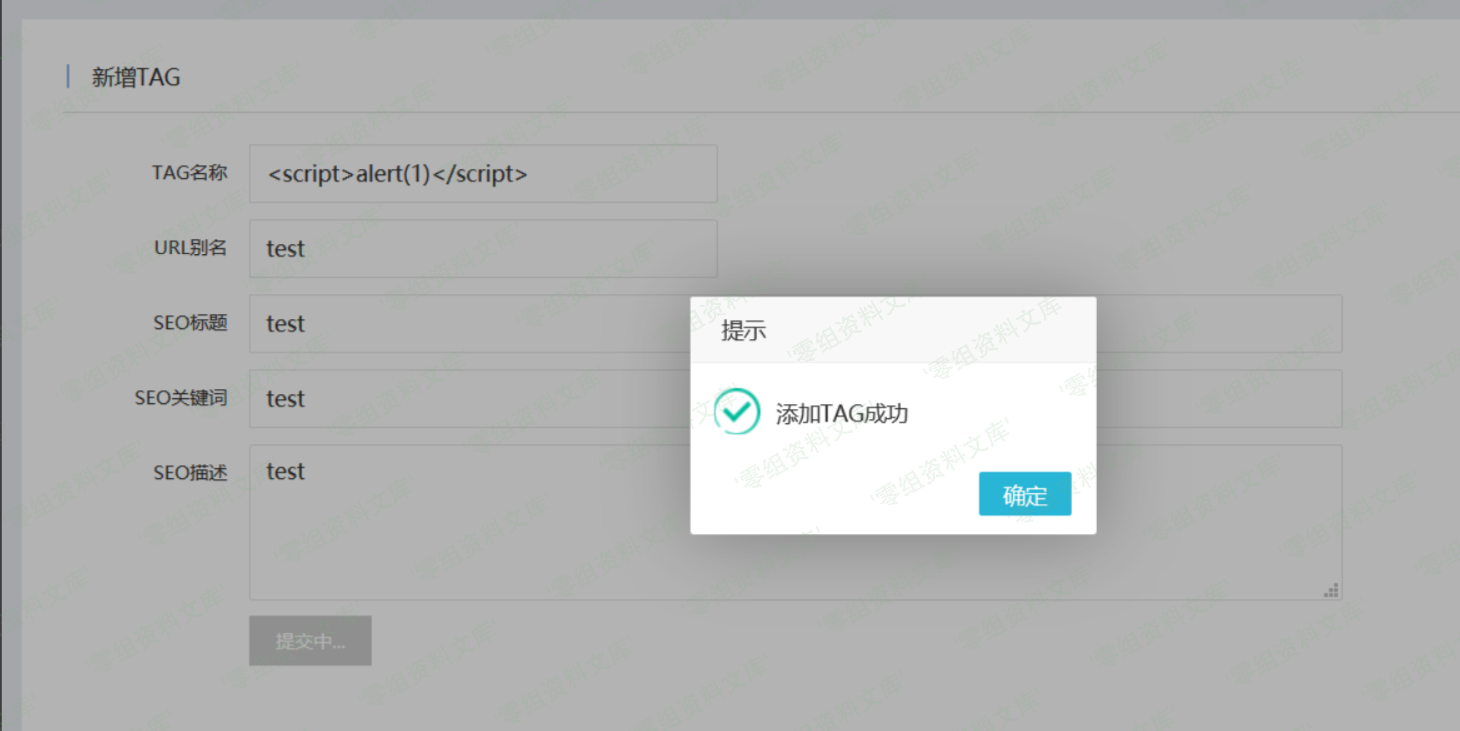
返回模块即可看到效果

查看源码,发现已经插入

查看数据库
image